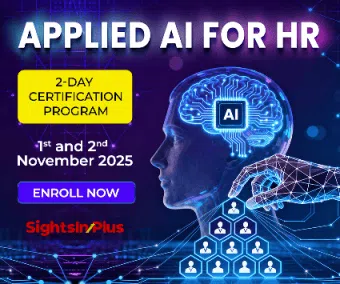Driving Engagement and Learning Retention Through Gamification Frameworks
Indian Gen Z makes up 377 Million of the population and one in four is already part of the workforce. According to a report by Boston Consulting Group in collaboration with Snapchat, titled The $2 Trillion Opportunity – How Gen Z is Shaping the New India, this number is expected to rise significantly—with 47% of Gen Z projected to be in the workforce by 2035, up from the current 25%.
Born between 1996 and 2010, this generation has been shaped by rapid digital innovation, economic uncertainty, and the global disruptions of a pandemic.
Also known as ‘digital natives,’ this generation has grown up with smartphones, social media as a second language, and an expectation of immediacy and interactivity in everything they do—from shopping to learning.
According to a 2024 McKinsey report titled What is Gen Z?, this cohort values continuous growth, personalised experiences, and tech-savvy platforms for continuous learning.
For human resource leaders, this means that traditional, static training methods are no longer sufficient. To truly engage and upskill this dynamic generation, companies need learning strategies that are not just informative but immersive, and gamification is emerging as a powerful solution to do just that.
What Is Gamification?
Gamification is the application of game design elements—such as points, levels, badges, leaderboards, challenges, and rewards—to non-game settings, including corporate learning and HR initiatives.
The idea is not to turn work into a game per se, but rather to make it more engaging by tapping into the psychological triggers that make games compelling: competition, achievement, instant feedback, and a sense of progress. In simpler terms, it is the usage of game mechanics and game thinking in non-game scenarios like business processes, rewards & recognition programs and learning & development modules.
For today’s workforce, especially Gen Z and millennials, who expect digital interactivity and real-time feedback, gamification aligns perfectly with their learning styles and attention spans.
In recent years, there has been a growing trend of using AI and gamification in HR practices at the workplace. Large Indian conglomerates and tech giants alike have introduced their learning platforms, helping employees upskill, cross-skill, and reskill into better versions of themselves.
For instance, IT services behemoth Infosys has developed Lex, a gamified learning platform that encourages continuous upskilling through interactive modules, quizzes, and leaderboards. Similarly, Fit4Life by Tata Consultancy Services gamifies employee wellness by promoting physical activity and healthy habits, awarding points and badges for achieving health goals.
Benefits of Gamification
Gamification works because it taps into fundamental human motivations—achievement, competition, recognition, and progress. There are a few broad areas where gamification can be adopted into everyday HR scenarios. These include:
- Training and Learning & Development: Gamification for training and L&D enhances knowledge retention through interactive quizzes and realistic simulations, while also making compliance training more engaging.
- Onboarding New Employees: Role-plays support faster job familiarisation, helping create a strong and memorable first impression with new employees.
- Performance & Productivity: Gamification tracks progress through points and milestones, motivating employees to reach their goals with a clear sense of achievement.
- Recognition & Team Culture: Leaderboards and badges encourage friendly competition and build a culture of appreciation and collaboration
- Wellness & Engagement: Games such as fitness and habit challenges promote well-being and foster connection among remote teams through shared goals.
So, whether it’s onboarding new hires, encouraging continuous learning, or promoting employee wellness, gamified solutions bring energy, clarity, and purpose to everyday HR functions.
It is no longer a buzzword but a proven strategy for employee engagement and knowledge retention. The future of work is interactive, and gamification is a key tool in shaping that future.
Note: We are also on WhatsApp, LinkedIn, Google News, and YouTube, to get the latest news updates. Subscribe to our Channels. WhatsApp– Click Here, Google News– Click Here, YouTube – Click Here, and LinkedIn– Click Here.



